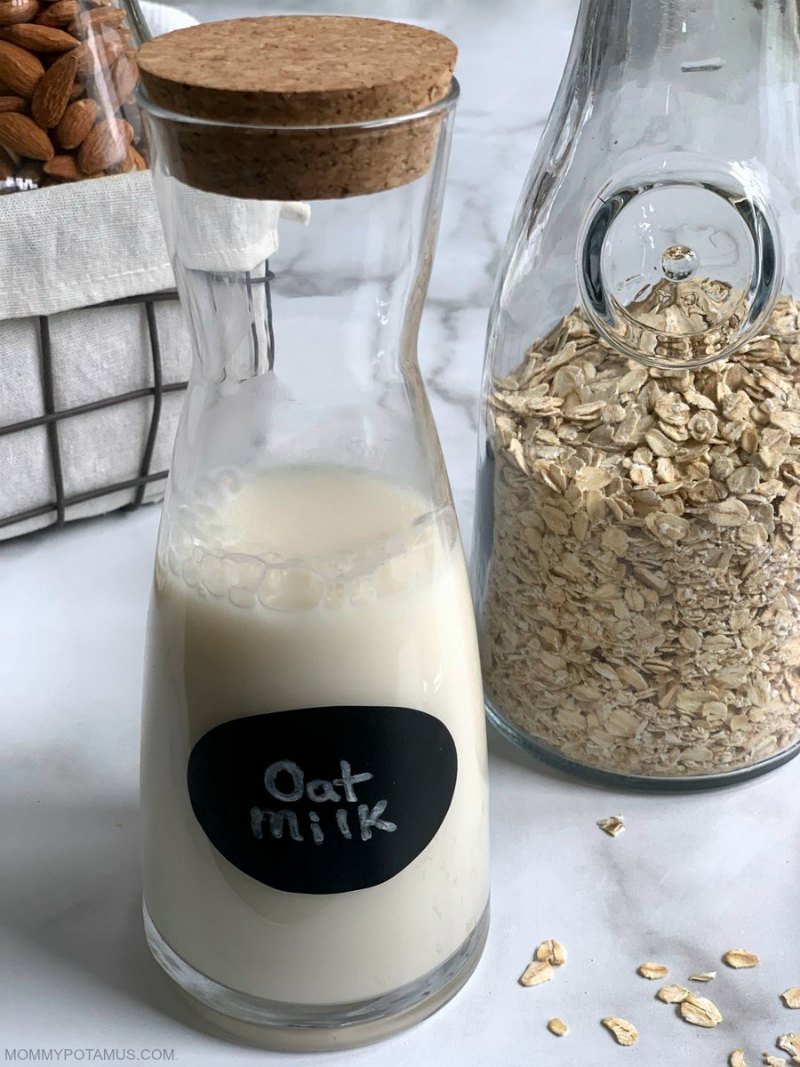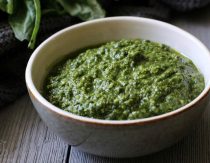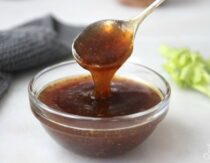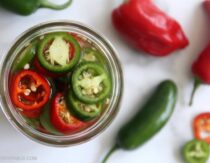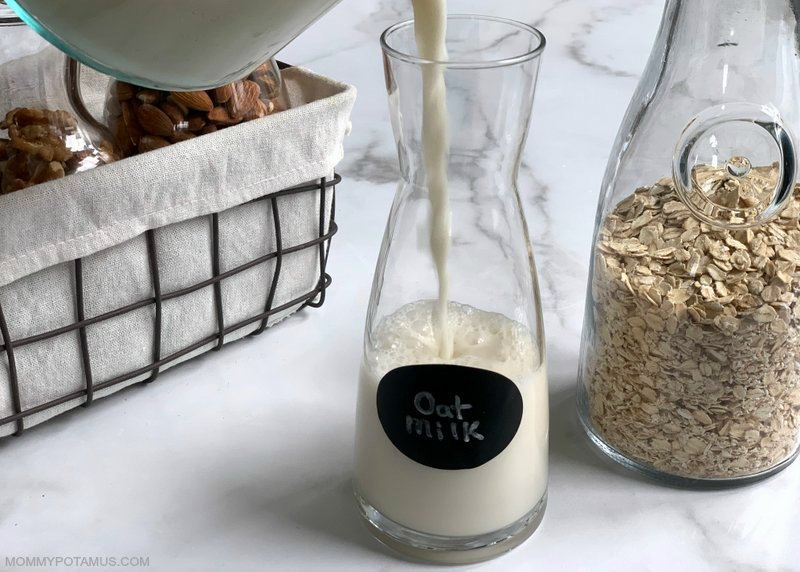
Want a creamy, non-dairy milk option that is incredibly easy to make, will save you money, and doesn’t require any fancy equipment? Good, because I’m about to show you how to make oat milk with just two ingredients, a blender, and a thin kitchen towel or some cheesecloth.
With all the non-dairy milk options available these days, you might be wondering why you’d want to give oat milk a try. Here are some of my favorite things about it:
It’s nut-free, which is great news for people who can’t have almond milk or cashew milk due to food sensitivities or allergies. Although coconuts are listed by the FDA as a tree nut, the Library of Congress says they are not a true nut, which is why many people who have nut allergies can consume coconut milk.
Unfortunately, it doesn’t work well flavor-wise in some recipes, like dairy-free alfredo sauce.
It’s quick and you don’t need any fancy equipment to make it. A regular blender will work just as well as a high-speed blender.
It’s cheap. Using my favorite high quality oats I calculated that 2.5 cups costs me about $0.63 to make, which is a lot less than most homemade dairy-free milks and A LOT less than store bought options. (In my local grocery store $0.67 will pay for about 1 ounce of pre-made oat milk.)
Almost all of the oats get incorporated into the milk so there’s almost no waste, and the small amount of pulp that is left over can easily be put to use. (Ideas below)
It’s free of preservatives and other additives, unlike most store-bought options.
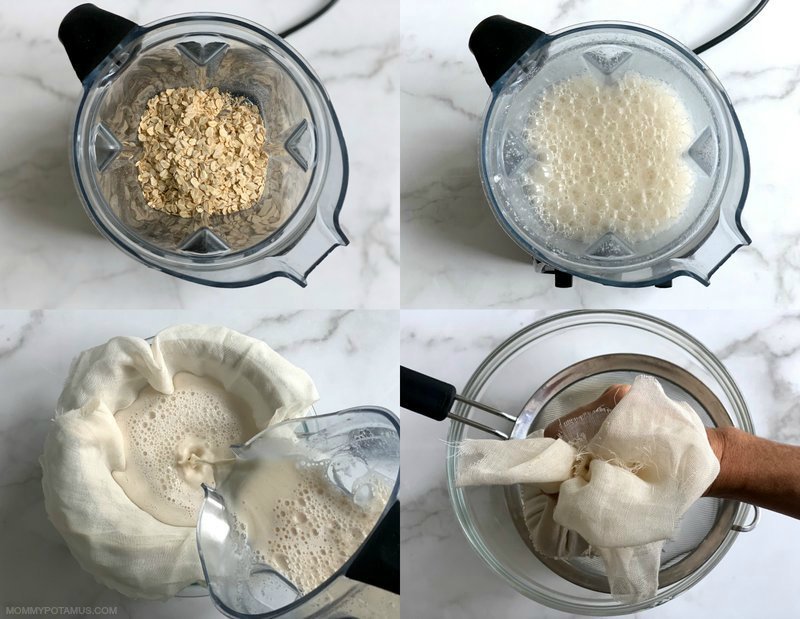
How To Make Oat Milk
Although there are more complicated methods for making oat milk, I’ve found that the easiest is also the best in terms of creaminess and flavor:
1. Blend – Add oats, water, and any optional flavorings you want to incorporate to your blender. Blend on high for 30-40 seconds if using a high-speed blender like a Vitamix, or a little more if using a regular blender.
2. Strain – Place a thin kitchen towel or a couple of layers of cheesecloth over a bowl – I like to put mine on top of a mesh strainer so that the cloth doesn’t fall into the bowl when I pour the liquid in. (It also strains the liquid a second time which is nice.)
3. Store – Transfer to a mason jar or sealable container and store in the fridge.
How To Avoid Slimy Oat Milk
You know how oatmeal thickens as it cooks? That’s great for a warm, comforting bowl of porridge or baked pumpkin oatmeal, but not so much milk. In order to get creamy oat milk, you’ll want to avoid activating the naturally occurring starch in oats that can cause thickening. Here are some ways to do that:
Don’t over-blend – If you’re using a high-powered blender, blend for no more than 40 seconds. Regular blenders have a little more variability in terms of speeds so there isn’t a precise number to shoot for, so it may take a little experimentation to find the perfect amount of time. In general, the goal is to blend until it looks creamy and then strain.
Use cold water for blending – Warm to hot water activates the starch that causes thickening, so use cold water to make oat milk.
Don’t soak your oats – Some recipes call for soaking and rinsing the oats before making oat milk in order to reduce sliminess, but I’ve found that it has the opposite effect.
Strain well – You want to remove as much starch as possible. As mentioned above, I strain mine through both a folded piece of cheesecloth (or thin towel) and a mesh strainer.
What are the best oats for making oat milk?
For the purpose of making oat milk, quick oats are too processed (and therefore more prone to slime) while steel cut oats are underprocessed (leading to thin, watery milk).
Instead, I opt for:
Organic, gluten-free old fashioned rolled oats – These are the standard rolled oats you’ll find on most store shelves.
Organic, gluten-free sprouted rolled oats – Mostly available online, this type pretty is much exactly like standard oats, except it’s been sprouted to reduce the naturally occurring phytic acid. Many traditional cultures soak or sprout grains, nuts, and seeds to make them more digestible and nutritious.
So which type is best? Really, both work just fine. If I planned to guzzle it all the time I’d opt for sprouted oats because they’re easier on digestion, but regular oats used in moderation should be fine.
Homemade Oat Milk vs. Store-Bought
This oat milk makes a delicious coffee creamer and can be poured over homemade granola, added to baked goods, and used in most ways you’d use regular milk.
However, something to keep in mind is that most store-bought oat milks have undergone two types of additional processing:
First, enzymes are used to break down the starches that cause thickening when heated. That’s why they can be heated without a problem, but homemade oat milk can become thick and clumpy if heated. Fortunately, even though it’s not a good idea to heat homemade oat milk directly, I’ve found that I can add it to hot drinks without a problem.
Most store-bought options also contain rapeseed oil (often called canola) and thickeners, and my guess is that their purpose is in part to make up for the loss of creaminess. Rapeseed oil also helps prevent separation and creates a beautiful froth in lattes.
Personally, I’m fine with shaking my oat milk if it separates in the fridge, and I prefer to use a healthy fat like coconut oil to help it foam better.
Flavoring Options
Like most dairy-free milks, there are both unsweetened and sweetened varieties of oat milk. Personally, I usually make mine without a sweetener so that I can use it in savory dishes, but if I’m making a batch to use with coffee or granola I’ll add it.
You’ll find instructions with the recipe, and you can also add homemade pumpkin spice, cacao/cocoa powder, or chai mix to taste.
How To Make Oat Milk
Ingredients
- 1 cup gluten-free rolled oats (regular or sprouted)
- 4 cups cold water
- 5 tsp maple syrup (optional)
- ¾ tsp vanilla extract (optional – how to make vanilla extract)
- pinch of salt (optional)
- 1 tsp coconut oil (optional)
Instructions
- Place a thin kitchen towel or two layers of cheesecloth over a bowl – I like to put mine on top of a fine mesh strainer so that the cloth doesn't fall into the bowl when I pour the liquid in. It also strains the liquid a second time which is nice.
- Add the oats, water, and any optional flavorings you want to incorporate to your blender. Blend on high for 30-40 seconds if using a high-speed blender like a Vitamix, or a little more if using a regular blender. It should look creamy and off-white/white when it's ready.
- Pour the liquid through the cloth, then lift the cloth and let the oat milk flow through the mesh strainer into the bowl. Unlike when you're making almond milk, you don't want to wring the cloth to force every last bit through – that results in slimy milk. However, you can gently press the top of the cloth or shake it up and down a little to release the milk.
- Sometimes if it is not draining as well as I think it should I also lay the cloth back in the strainer and then lift it up again. I don't know why it seems to help, but it does. Regardless of the exact method used, some oat pulp and liquid will stay inside the cloth – that's okay. Just add it to smoothies or other foods.
- Once you've strained the oat milk, pour it in an airtight container and store it in the fridge for up to 3-5 days.
Frequently Asked Questions
What does oat milk taste like?
It’s very oaty, which I love.
Is oat milk gluten-free?
Oats are naturally gluten-free, but they’re often processed on machinery that also processes wheat and other grains that contain gluten which can cause cross-contamination. For that reason, if you’re avoiding gluten you’ll want to look for certified gluten-free oats to make oat milk with.
Is there any way to use the leftover oat pulp?
Yep, you can use it in smoothies or to thicken sauces or gravy, add it to pancake batter for extra fiber, or apply it to your skin as a soothing oatmeal mask.
Mine separated in the fridge. Is that normal?
Yes, just shake well before using to recombine.
What is the shelf life?
3-5 days.
